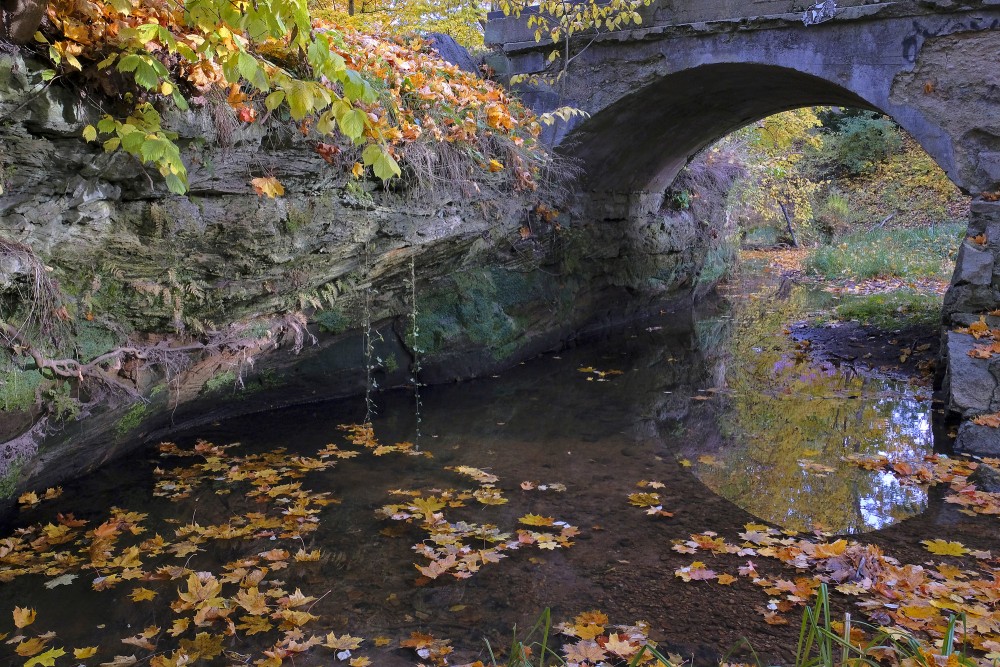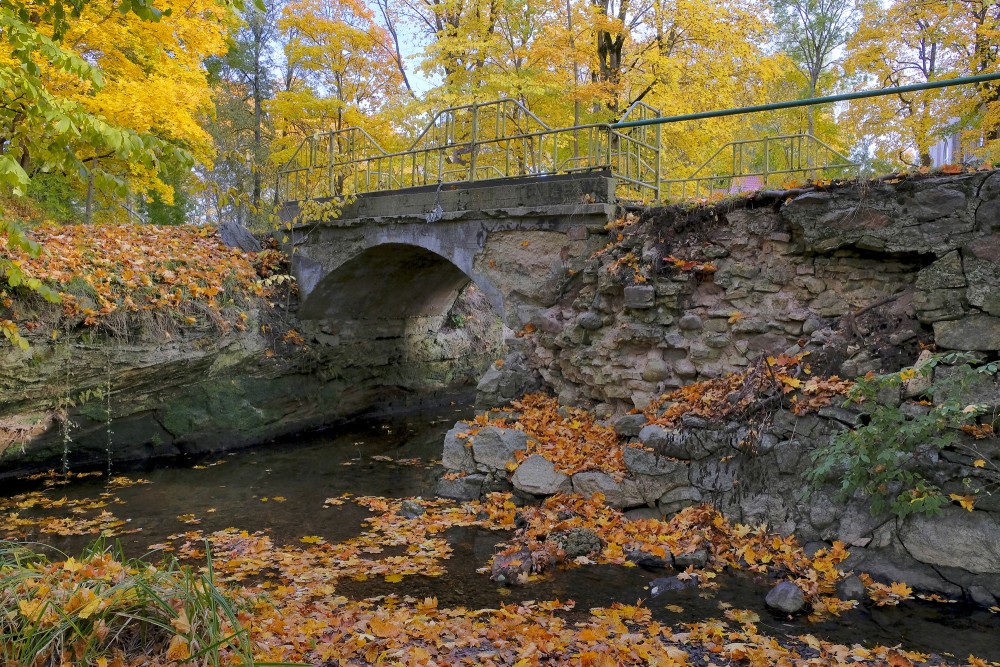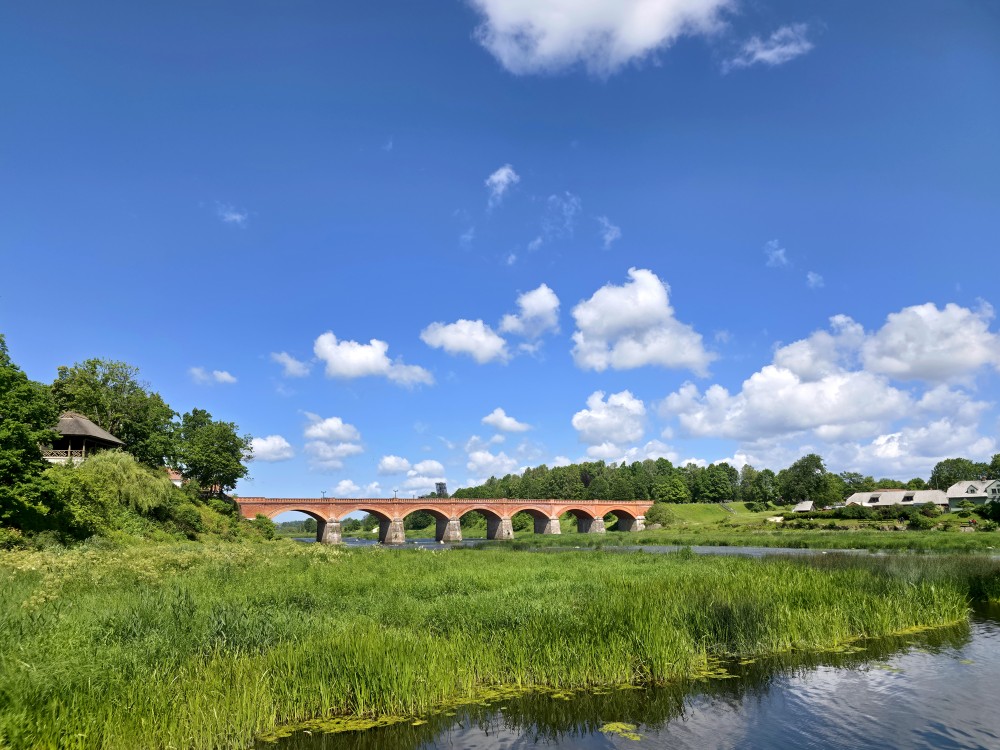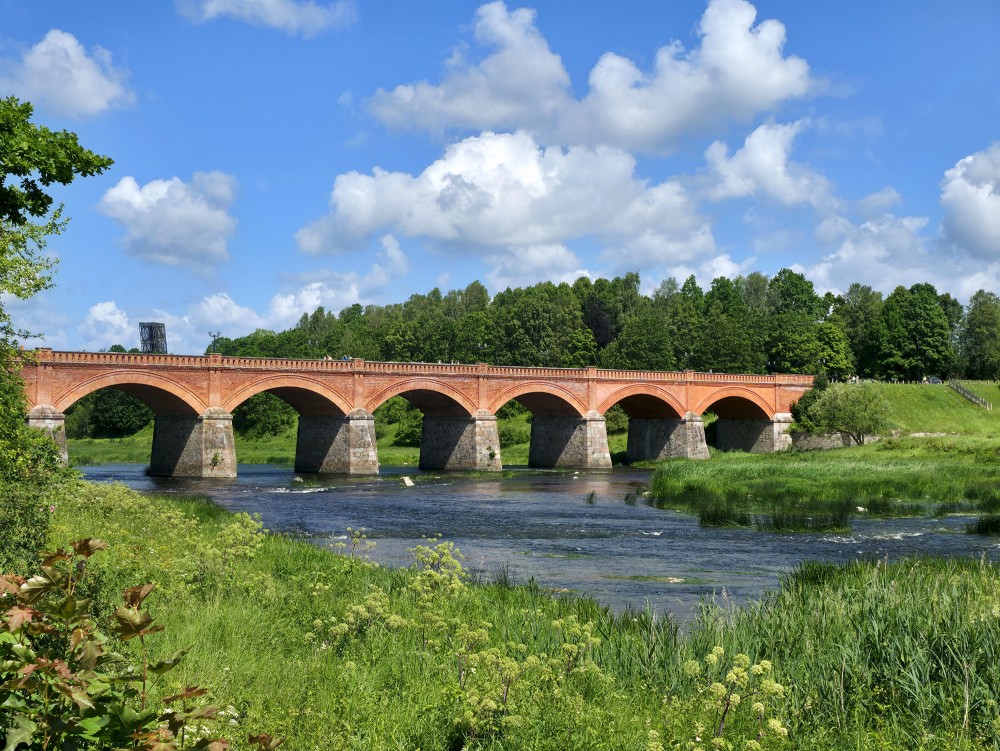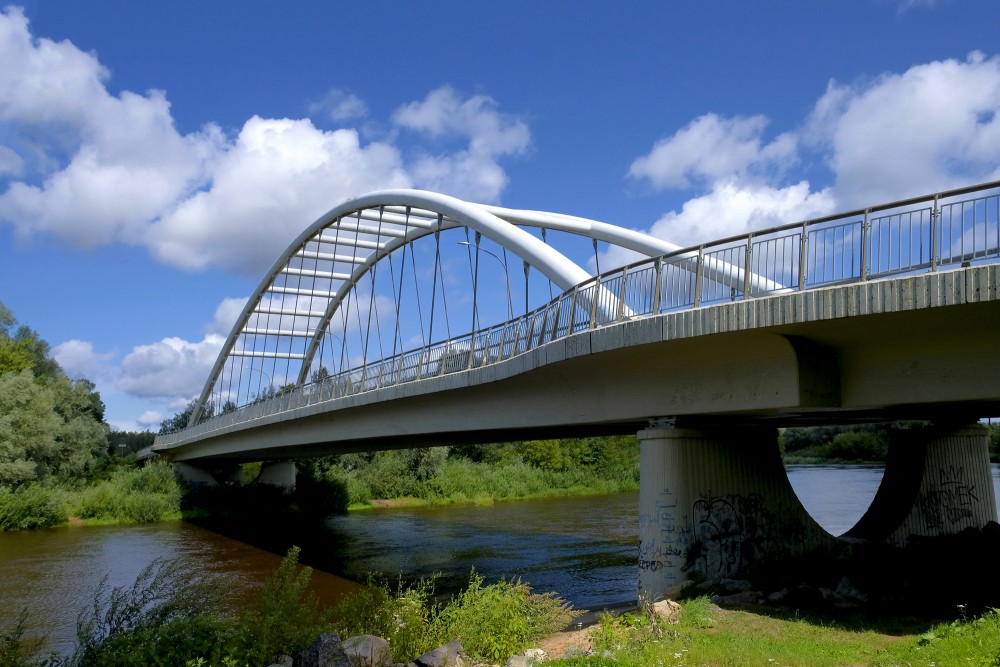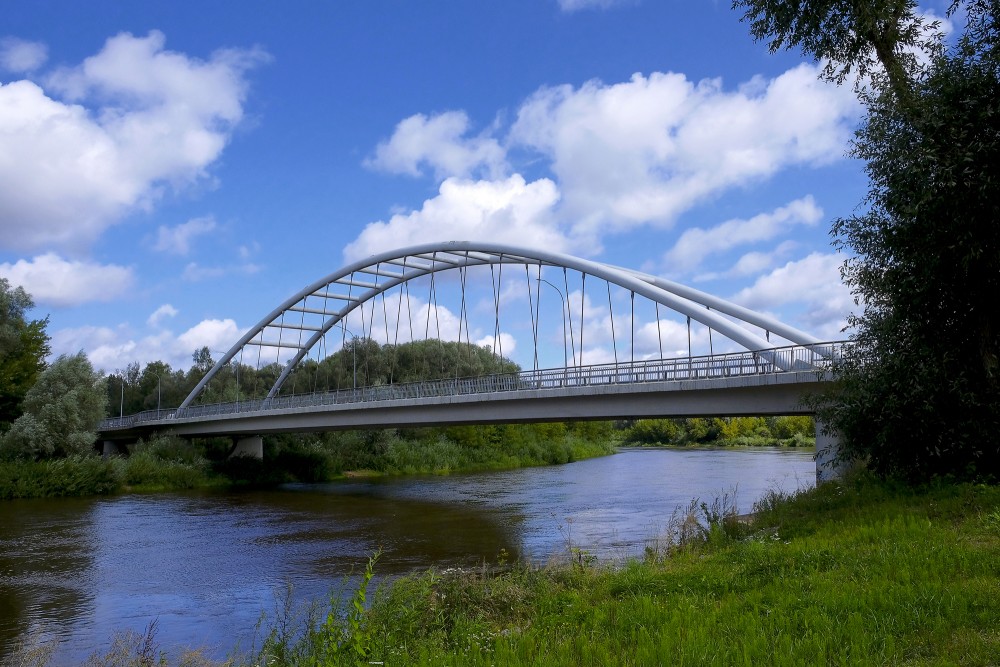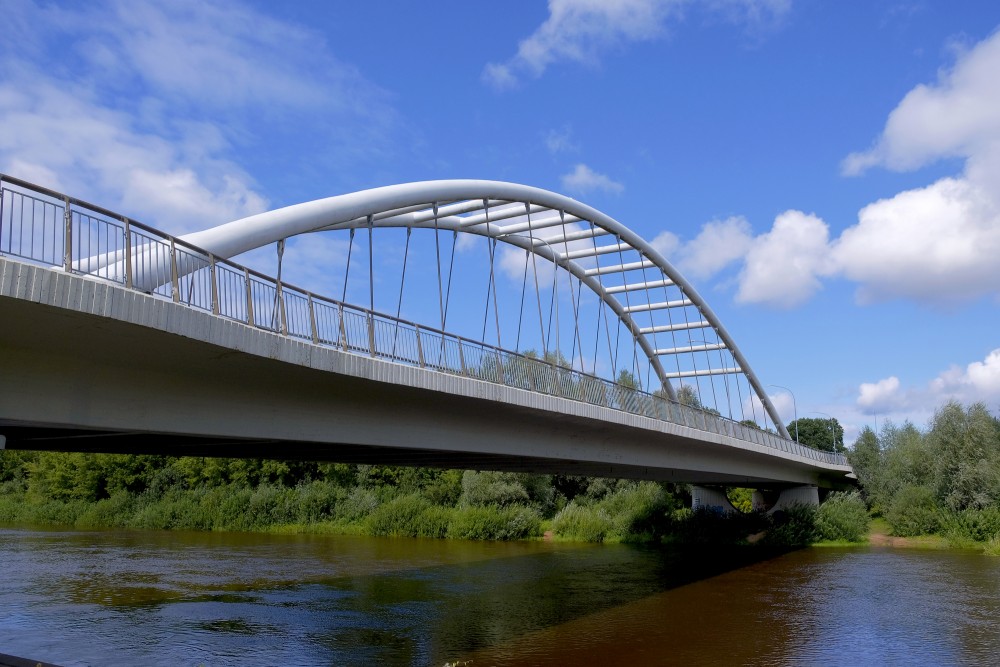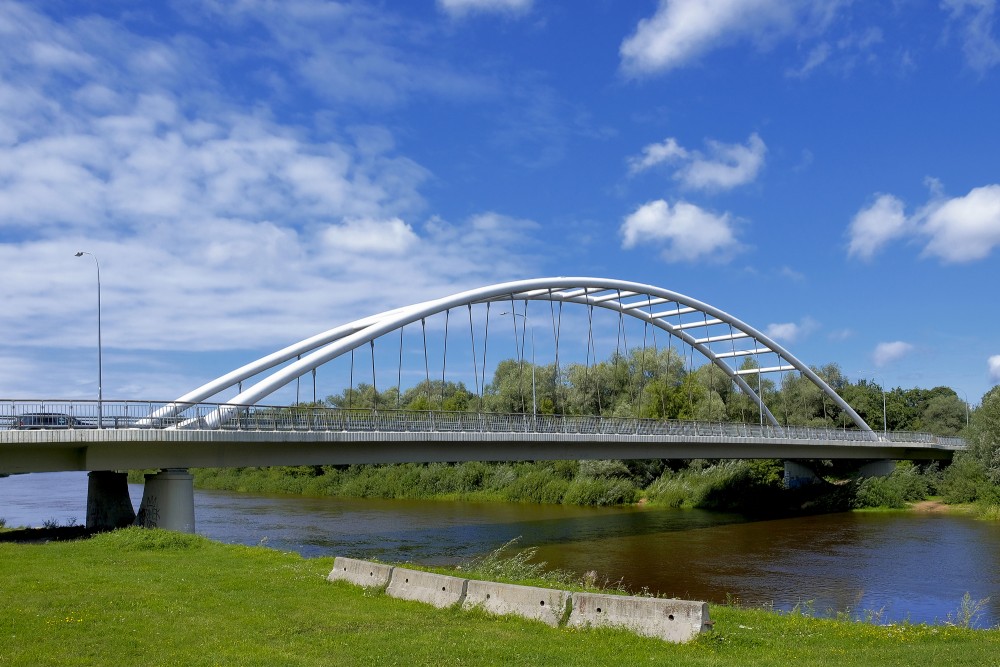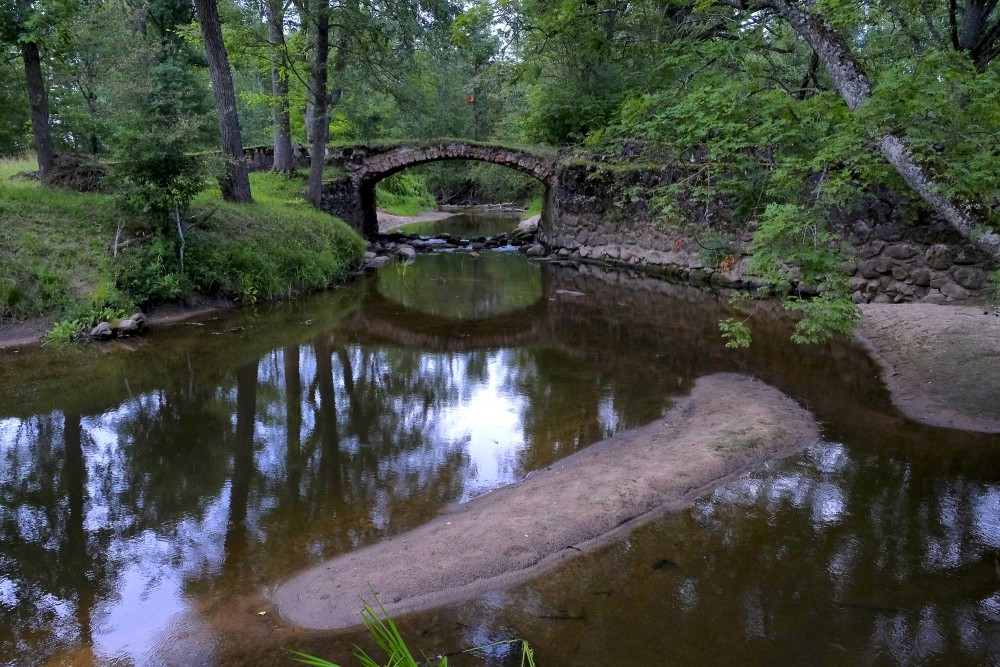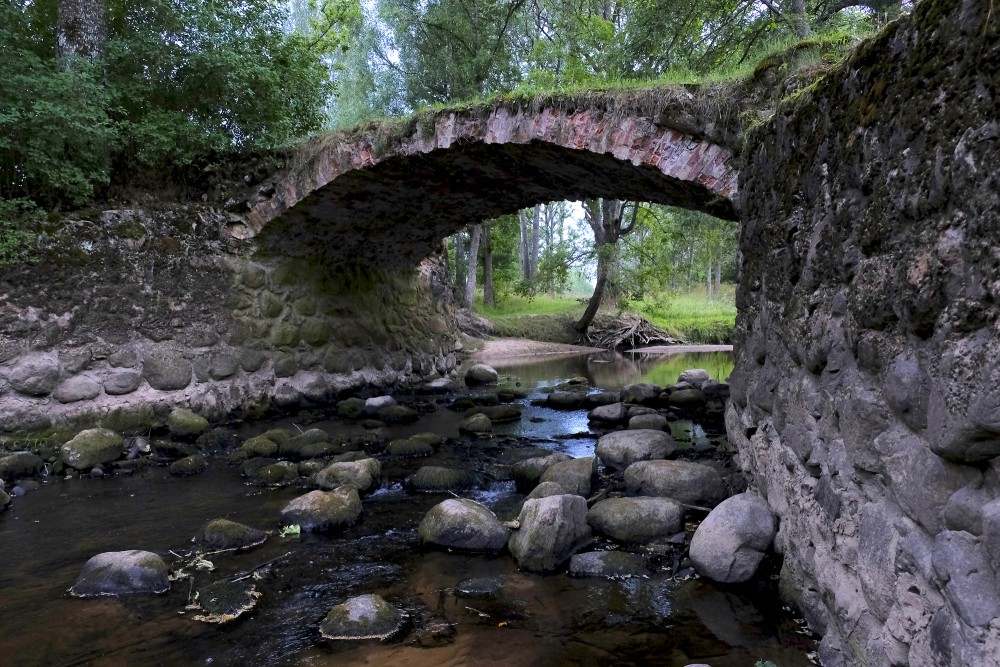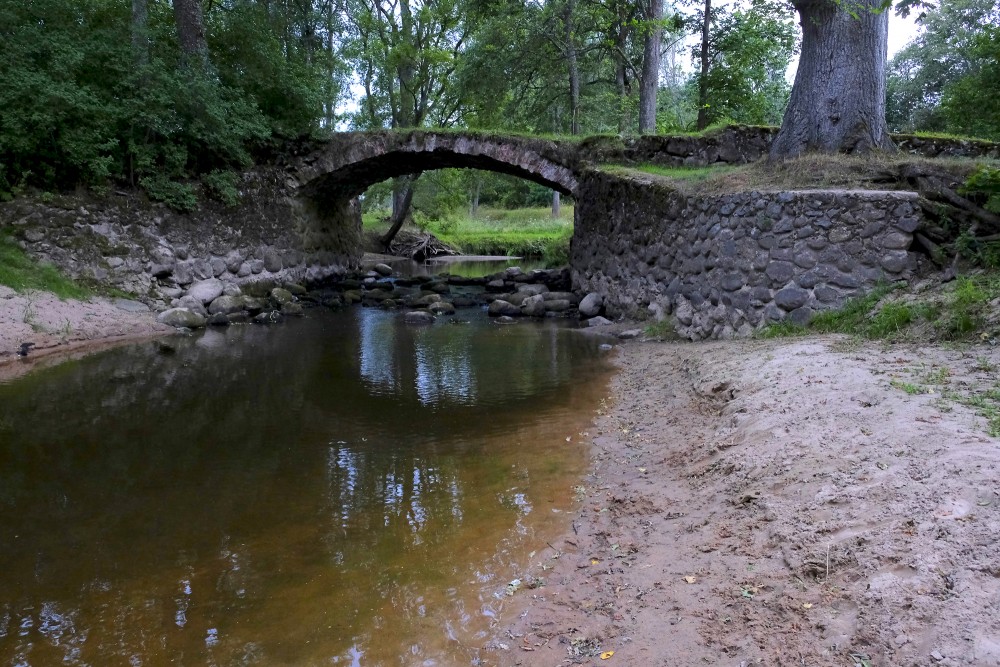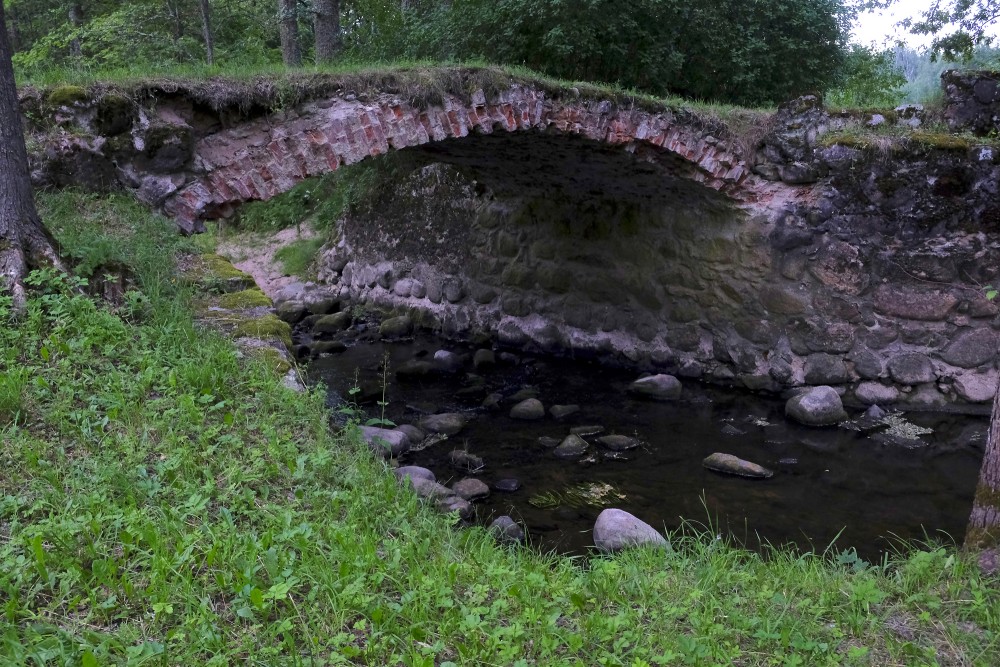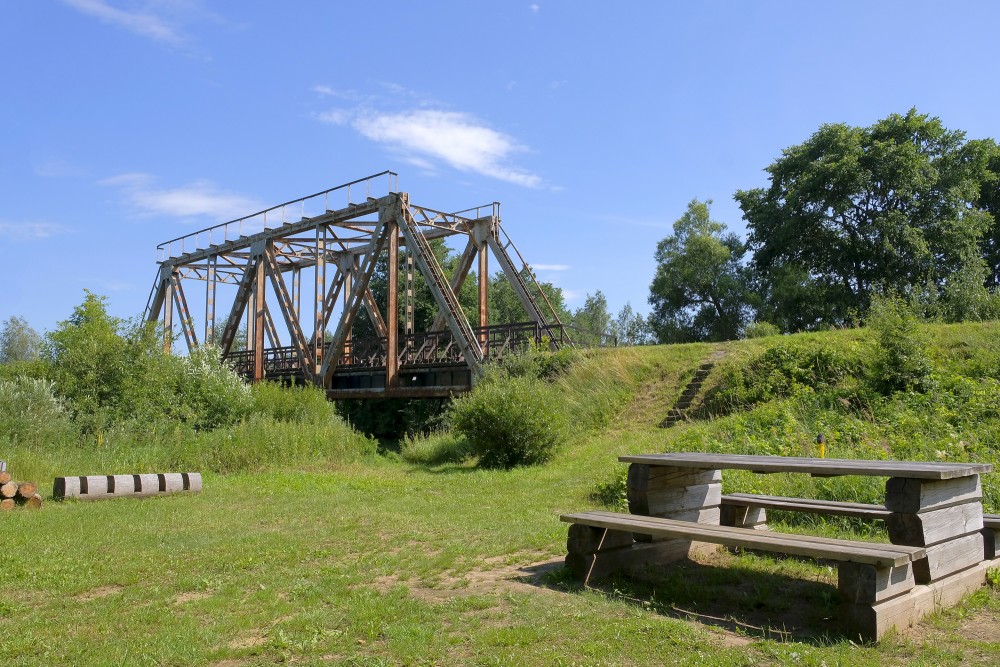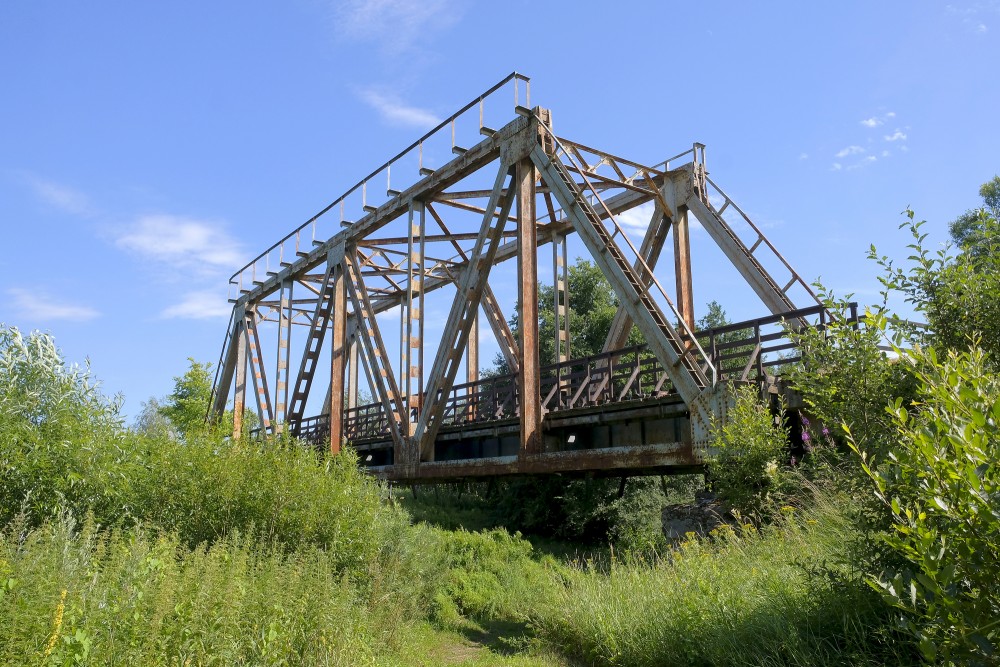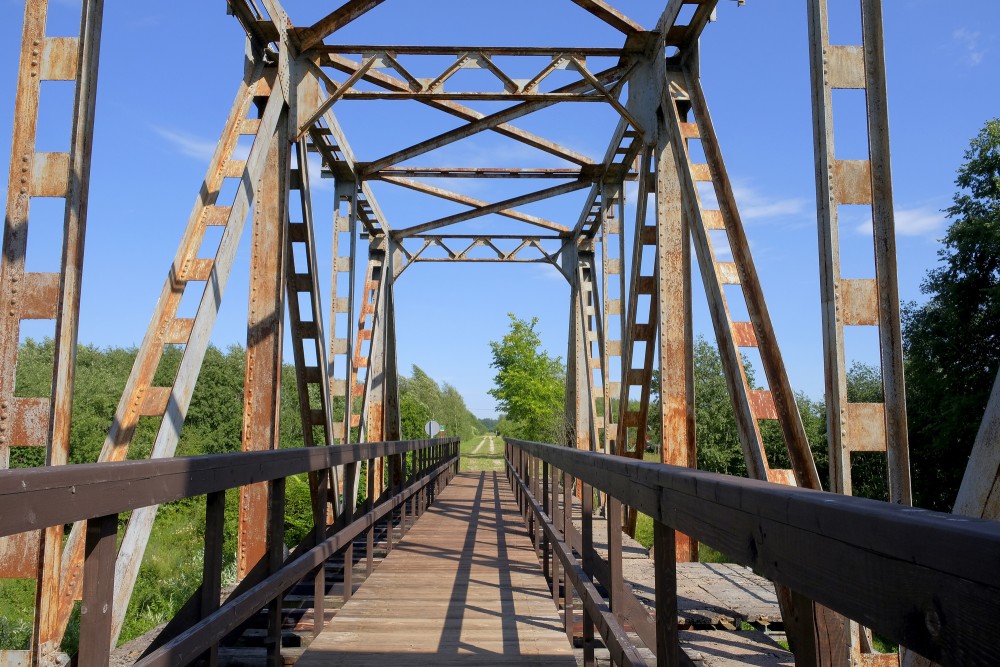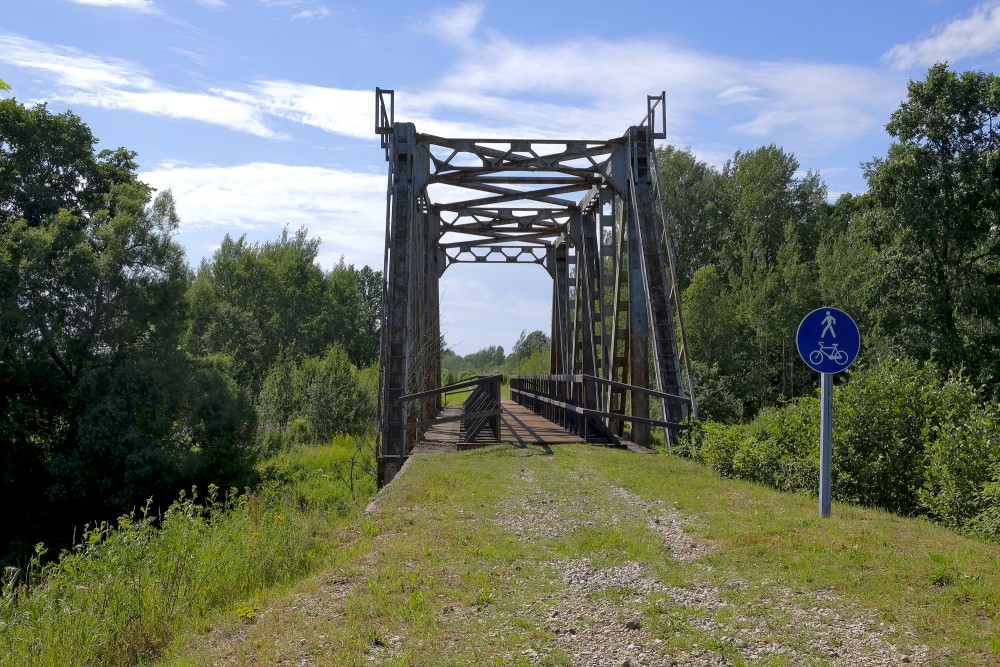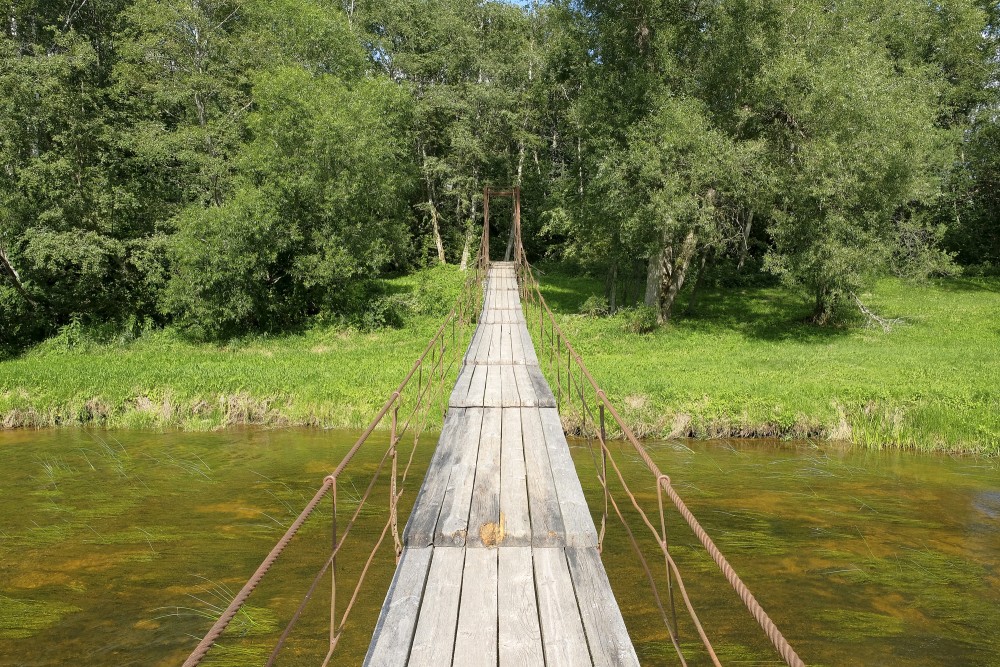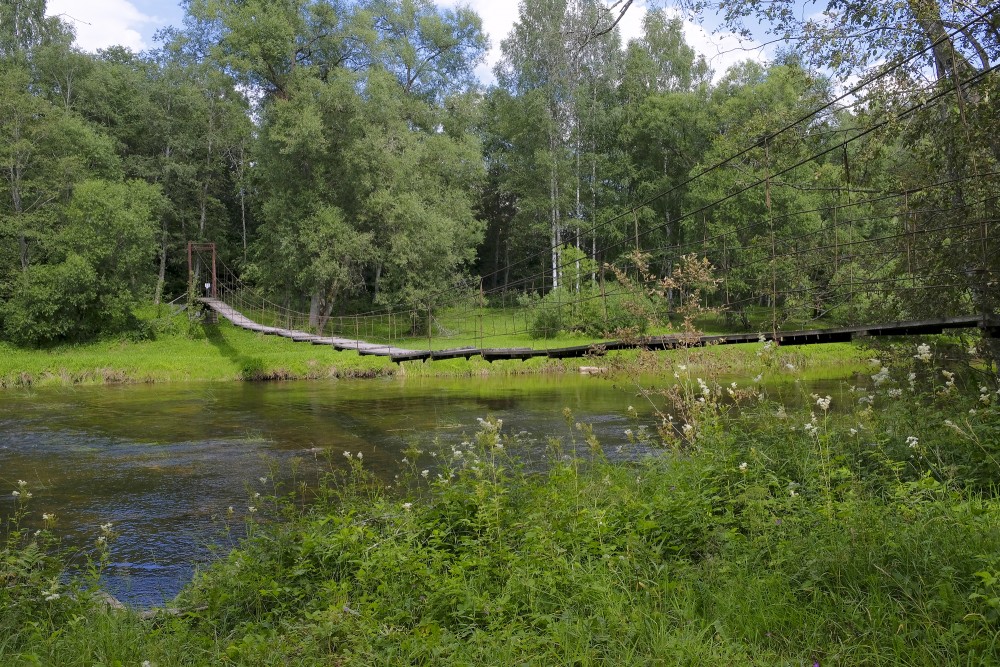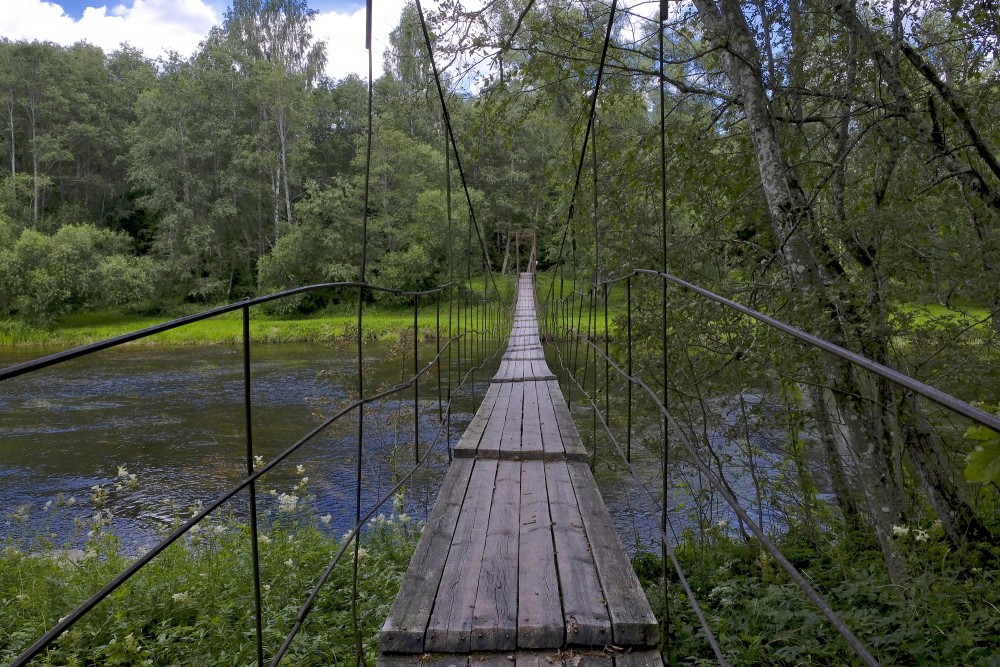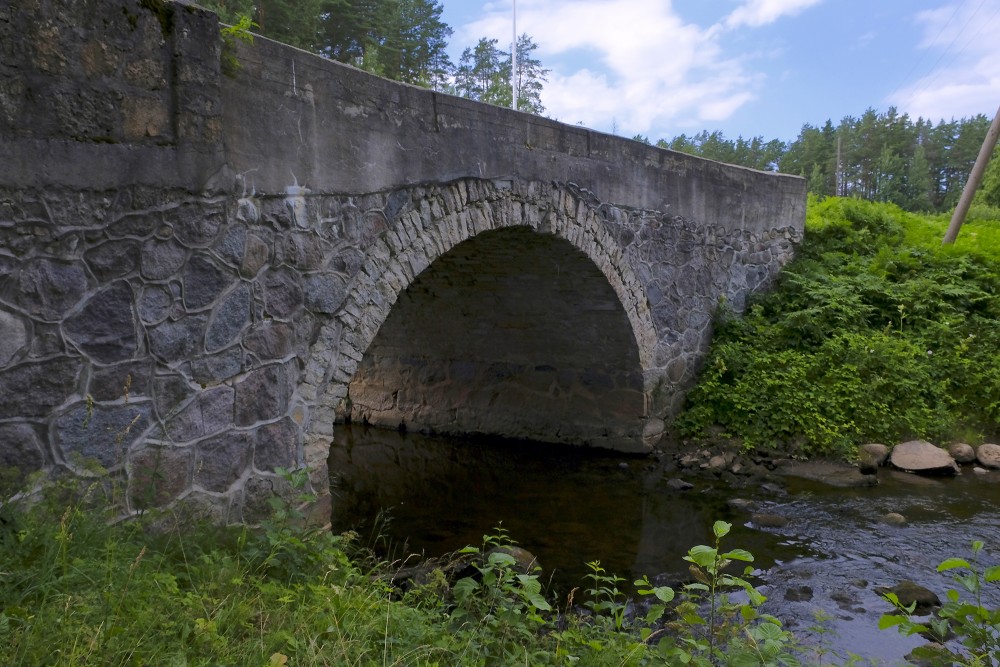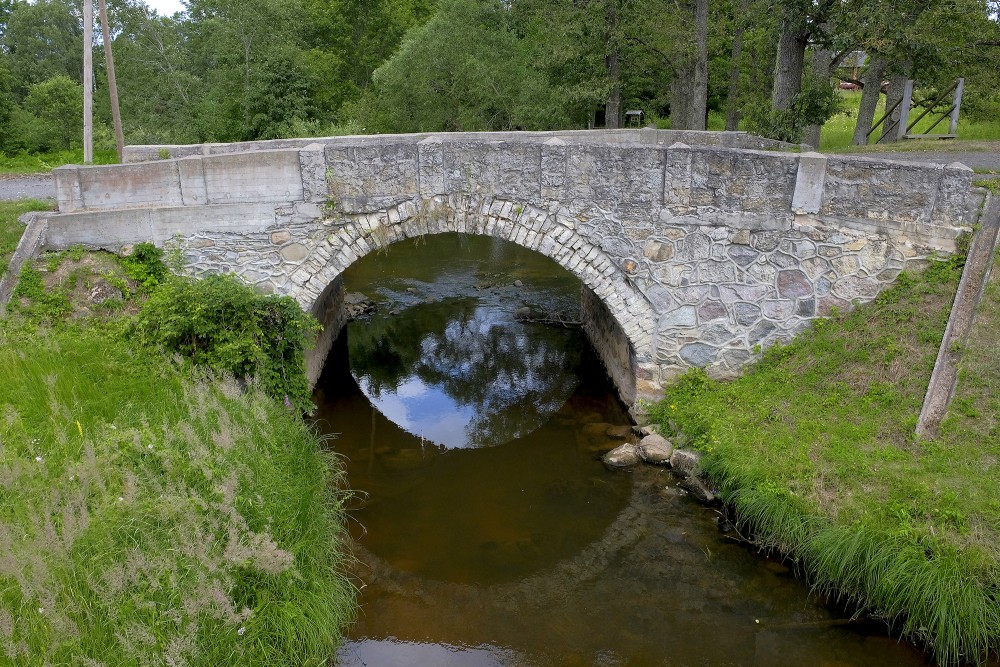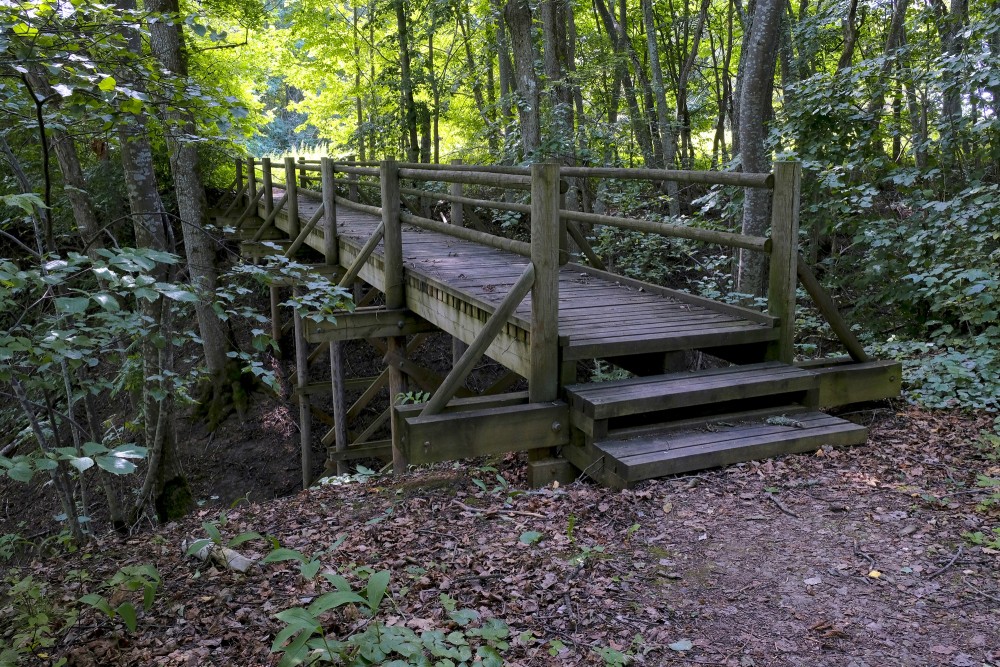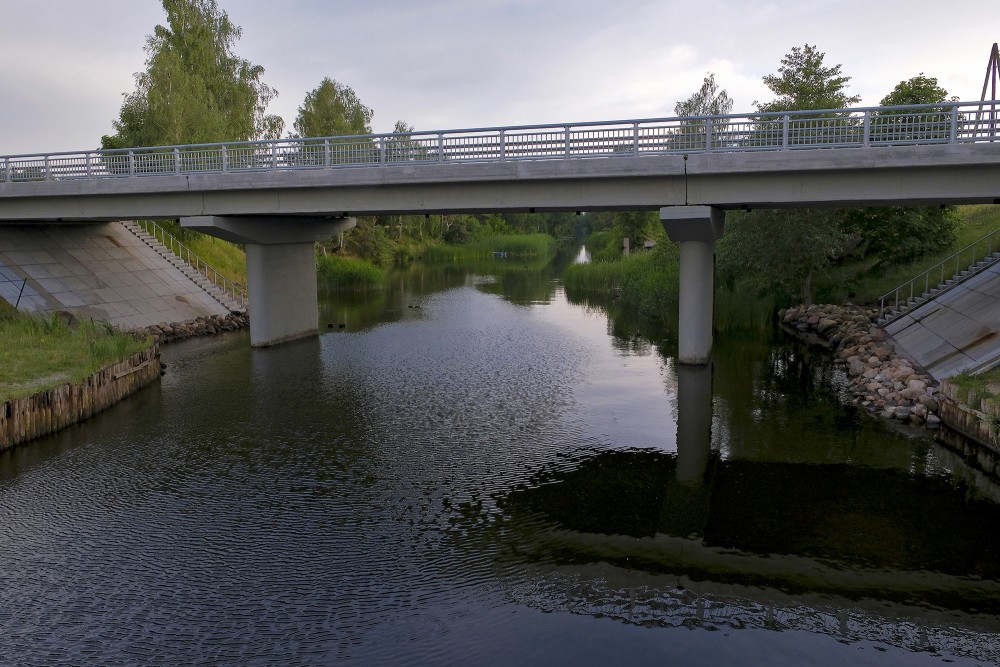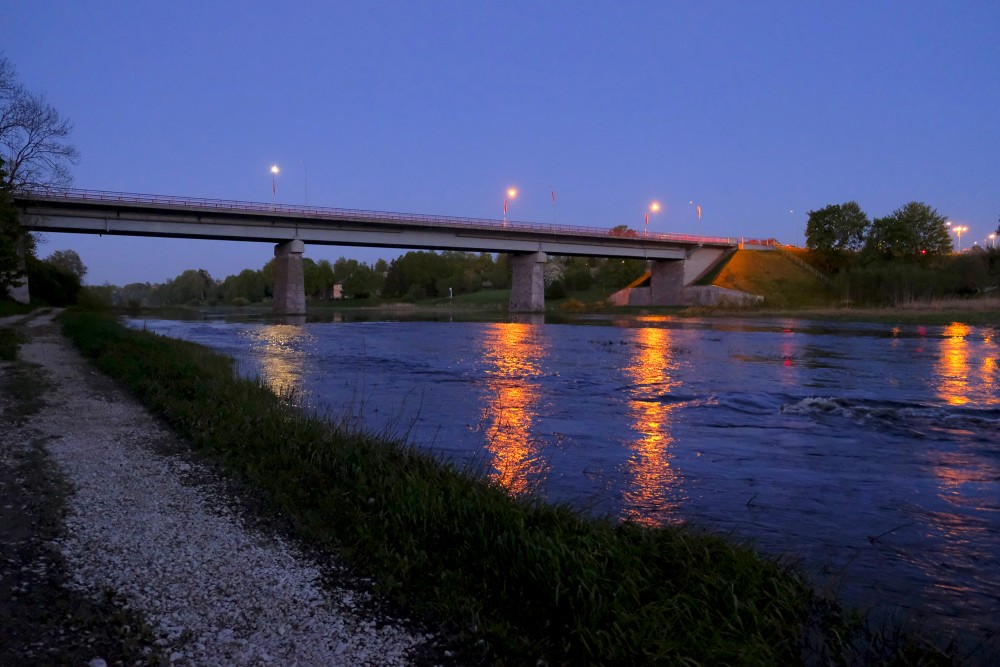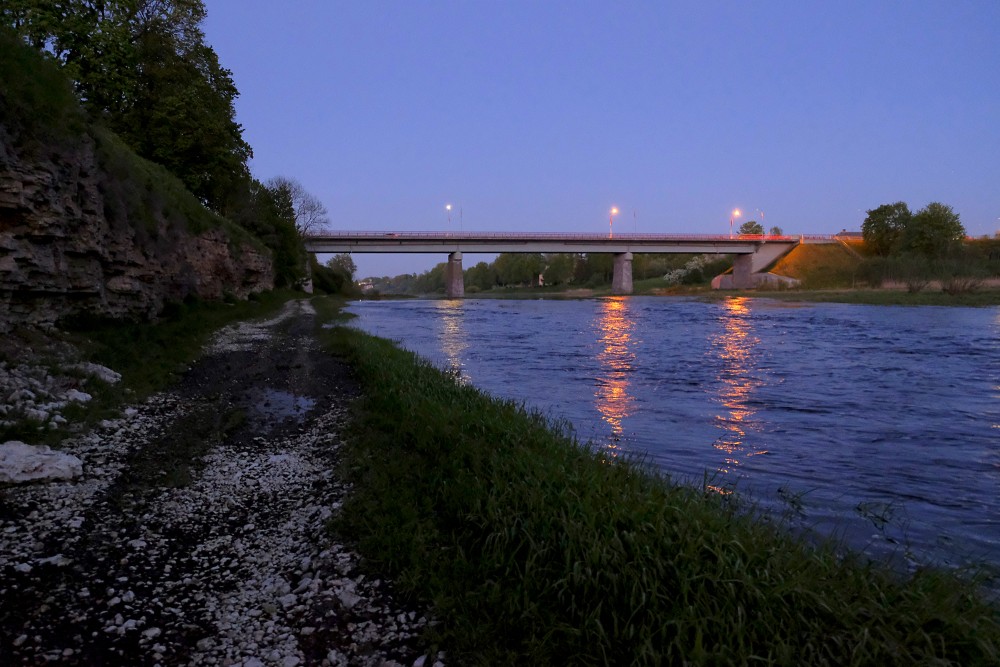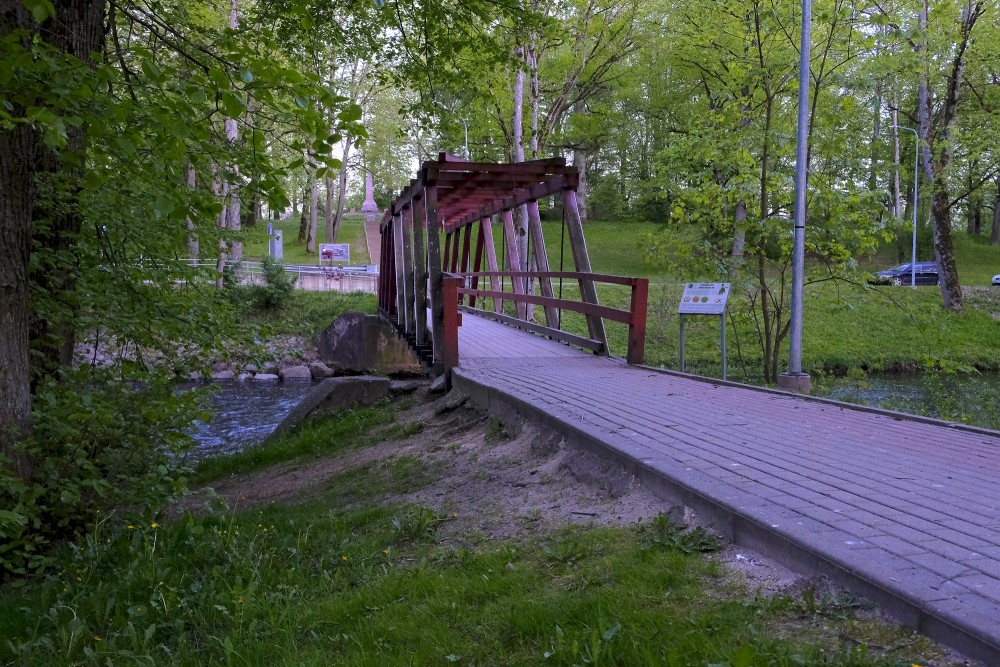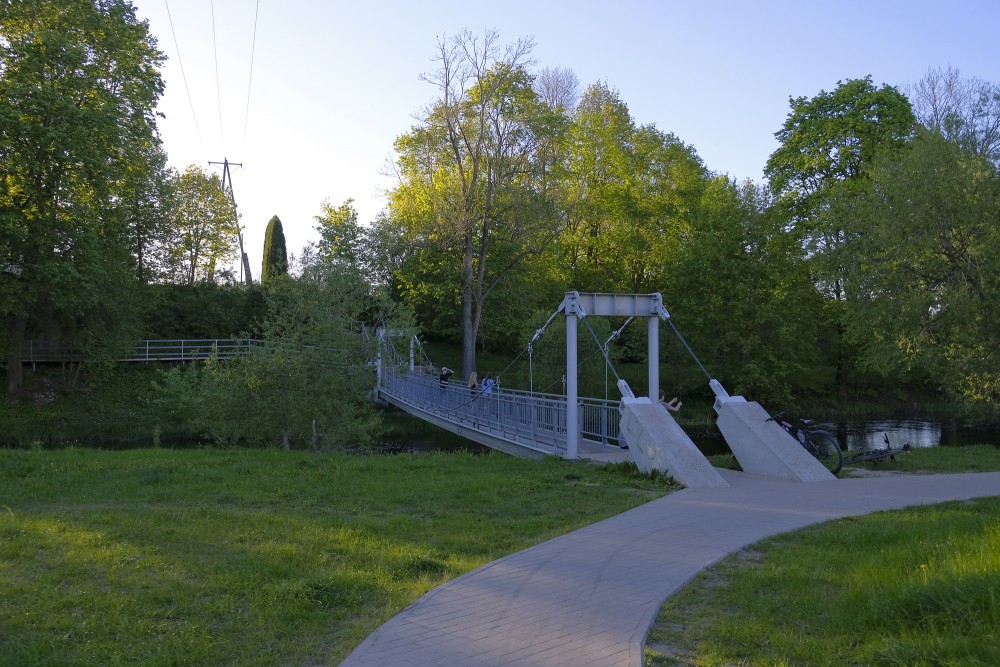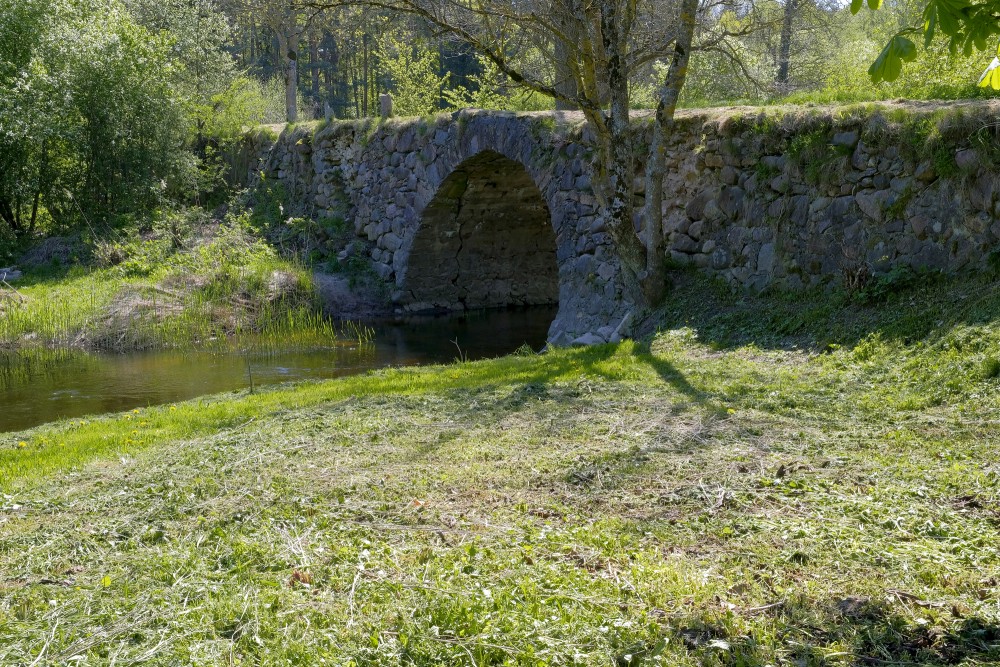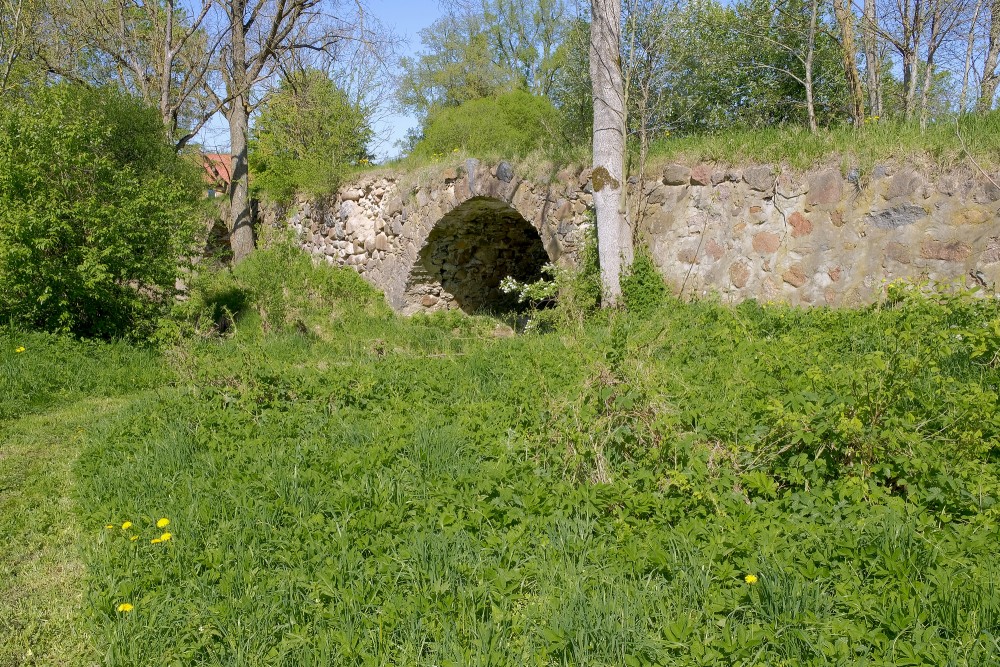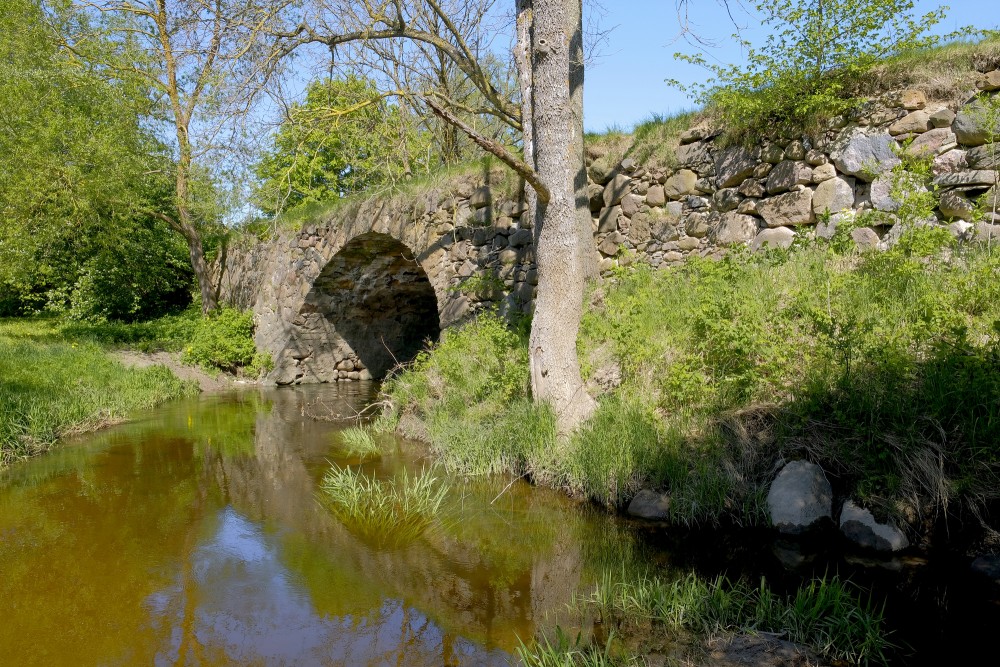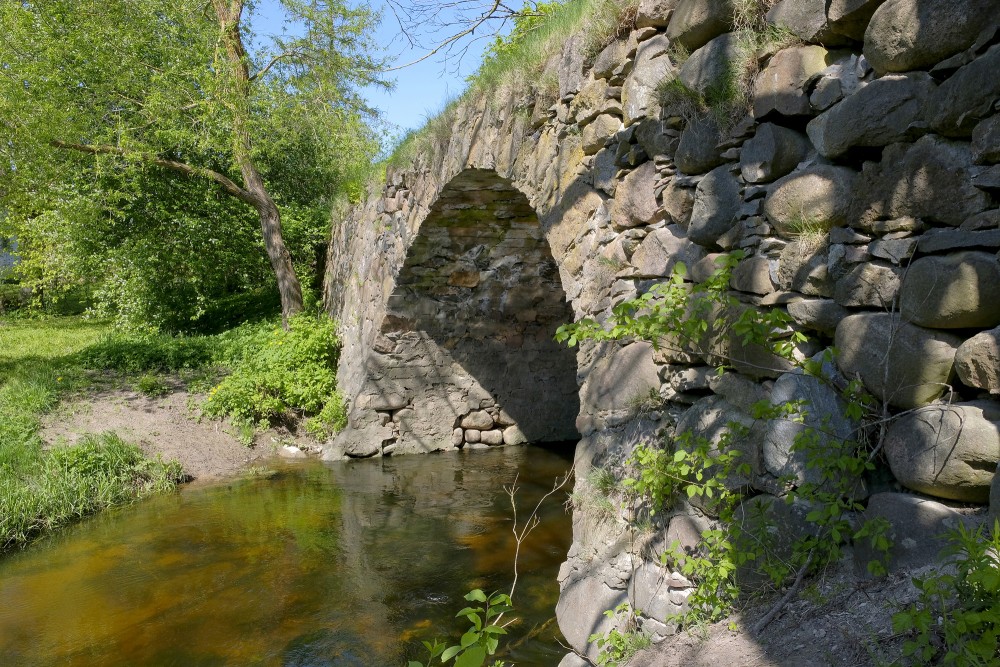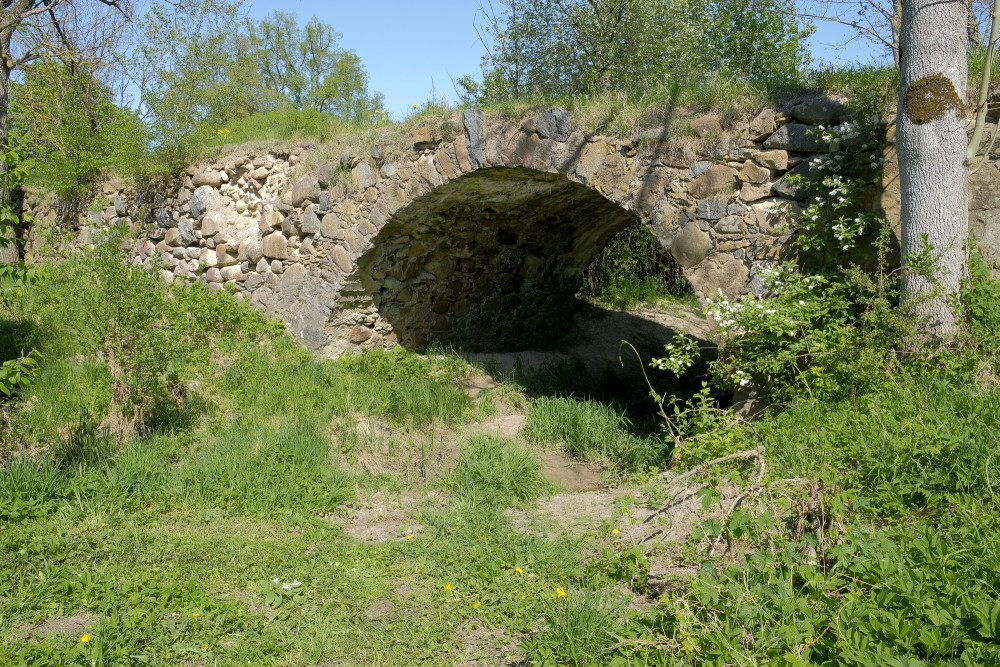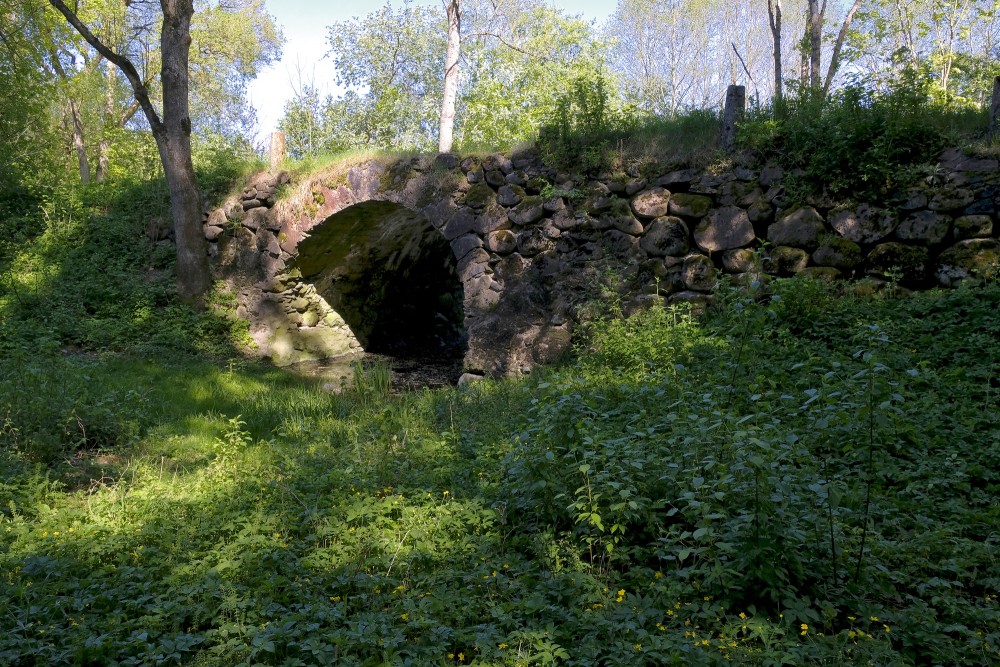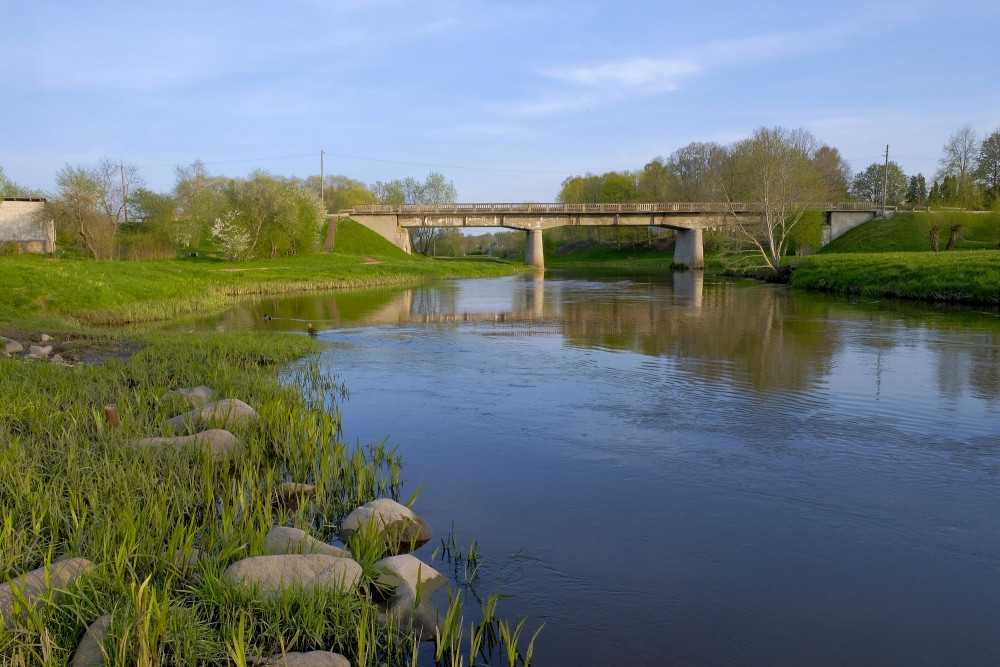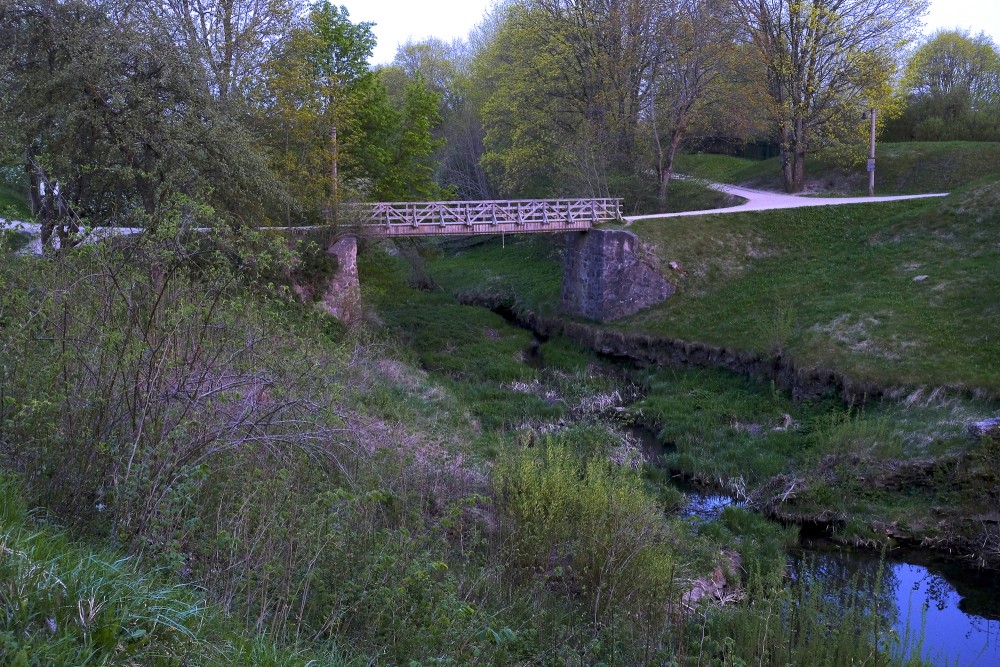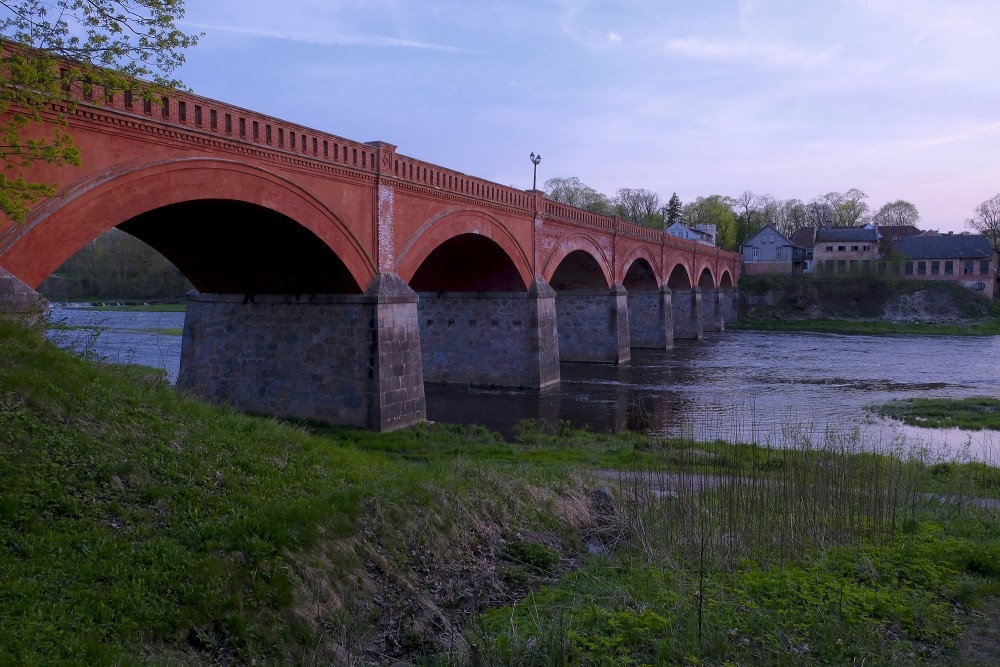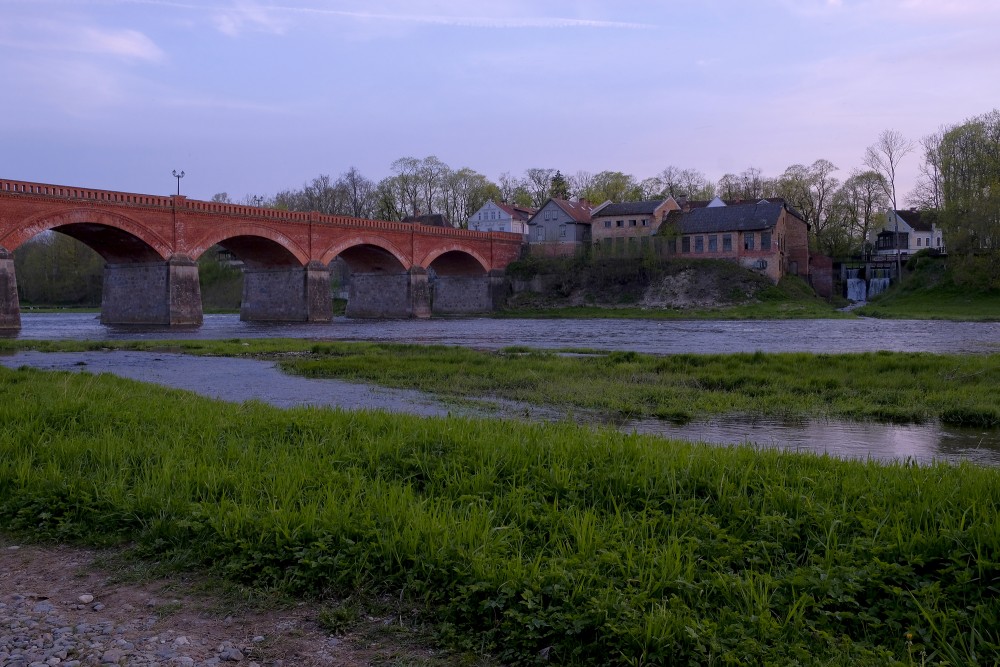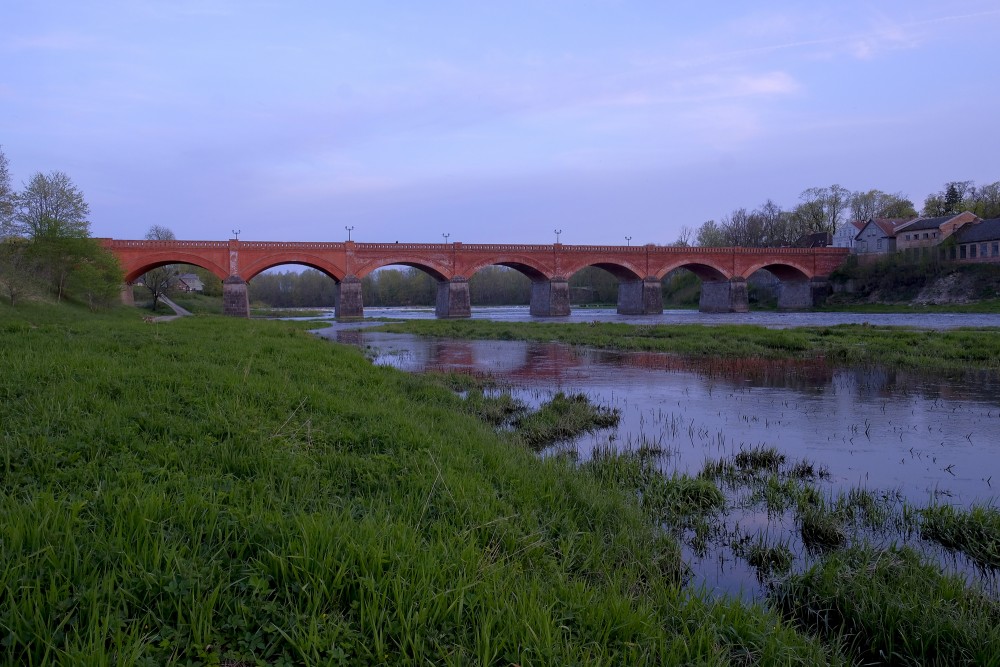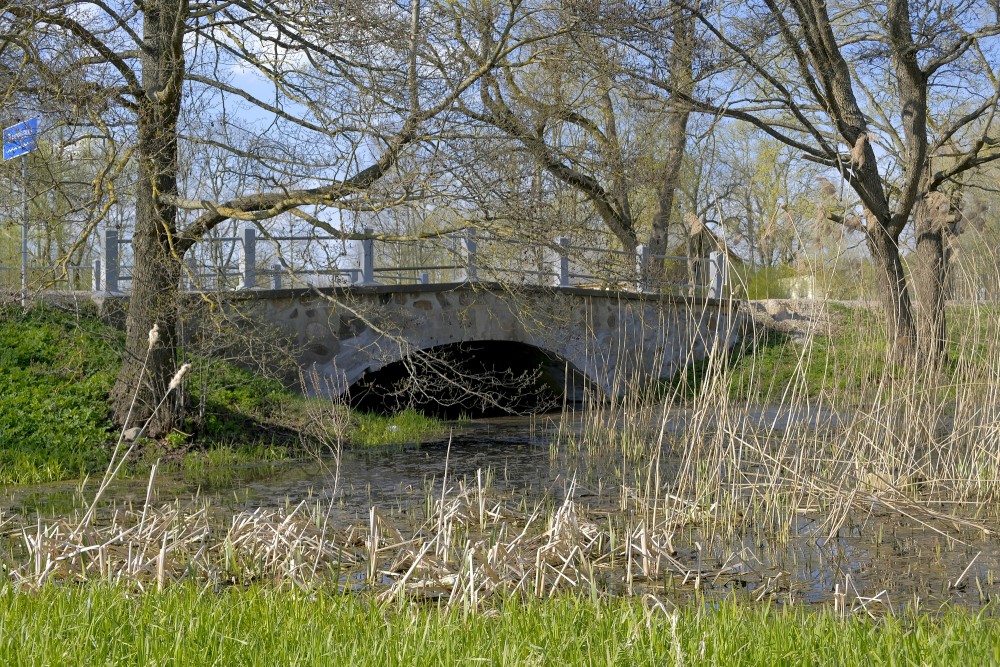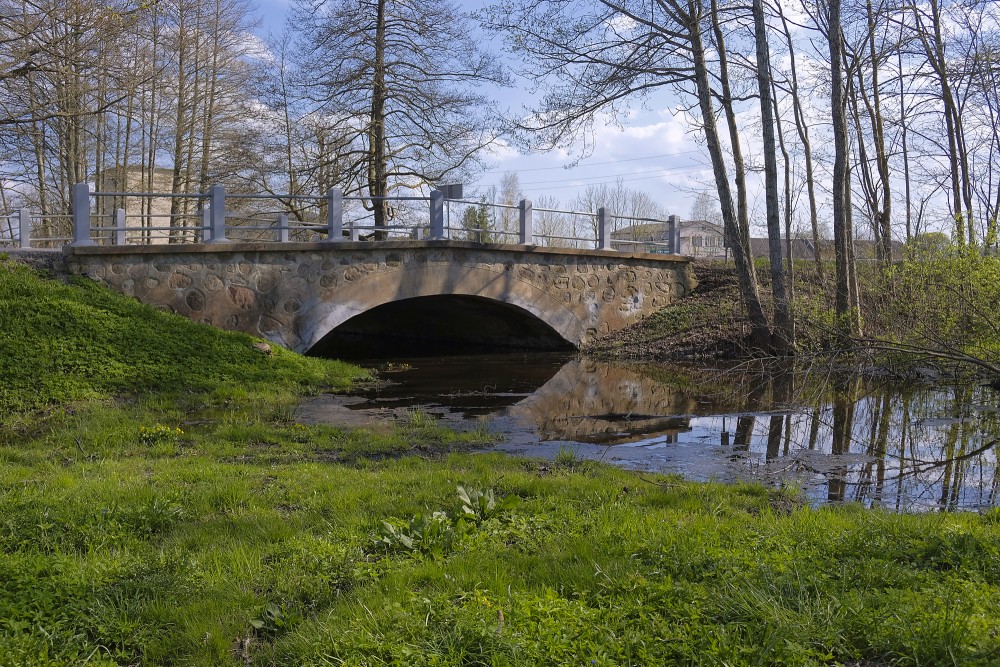Bridge
A bridge is a structure built to span physical obstacles without closing the way underneath such as a body of water, valley, or road, for the purpose of providing passage over the obstacle, usually something that can be detrimental to cross otherwise. There are many different designs that each serve a particular purpose and apply to different situations. Designs of bridges vary depending on the function of the bridge, the nature of the terrain where the bridge is constructed and anchored, the material used to make it, and the funds available to build it.
History
The Arkadiko Bridge is one of four Mycenaean corbel arch bridges part of a former network of roads, designed to accommodate chariots, between the fort of Tiryns and town of Epidauros in the Peloponnese, in southern Greece. Dating to the Greek Bronze Age (13th century BC), it is one of the oldest arch bridges still in existence and use. Several intact arched stone bridges from the Hellenistic era can be found in the Peloponnese.
The greatest bridge builders of antiquity were the ancient Romans. The Romans built arch bridges and aqueducts that could stand in conditions that would damage or destroy earlier designs. Some stand today. An example is the Alcántara Bridge, built over the river Tagus, in Spain. The Romans also used cement, which reduced the variation of strength found in natural stone. One type of cement, called pozzolana, consisted of water, lime, sand, and volcanic rock. Brick and mortar bridges were built after the Roman era, as the technology for cement was lost (then later rediscovered).
In India, the Arthashastra treatise by Kautilya mentions the construction of dams and bridges. A Mauryan bridge near Girnar was surveyed by James Princep. The bridge was swept away during a flood, and later repaired by Puspagupta, the chief architect of emperor Chandragupta I. The use of stronger bridges using plaited bamboo and iron chain was visible in India by about the 4th century. A number of bridges, both for military and commercial purposes, were constructed by the Mughal administration in India.
Although large Chinese bridges of wooden construction existed at the time of the Warring States, the oldest surviving stone bridge in China is the Zhaozhou Bridge, built from 595 to 605 AD during the Sui Dynasty. This bridge is also historically significant as it is the world's oldest open-spandrel stone segmental arch bridge. European segmental arch bridges date back to at least the Alconétar Bridge (approximately 2nd century AD), while the enormous Roman era Trajan's Bridge (105 AD) featured open-spandrel segmental arches in wooden construction.
Rope bridges, a simple type of suspension bridge, were used by the Inca civilization in the Andes mountains of South America, just prior to European colonization in the 16th century.
During the 18th century there were many innovations in the design of timber bridges by Hans Ulrich Grubenmann, Johannes Grubenmann, and others. The first book on bridge engineering was written by Hubert Gautier in 1716.
A major breakthrough in bridge technology came with the erection of the Iron Bridge in Shropshire, England in 1779. It used cast iron for the first time as arches to cross the river Severn.
With the Industrial Revolution in the 19th century, truss systems of wrought iron were developed for larger bridges, but iron does not have the tensile strength to support large loads. With the advent of steel, which has a high tensile strength, much larger bridges were built, many using the ideas of Gustave Eiffel.
In 1927 welding pioneer Stefan Bryła designed the first welded road bridge in the world, the Maurzyce Bridge which was later built across the river Słudwia at Maurzyce near Łowicz, Poland in 1929. In 1995, the American Welding Society presented the Historic Welded Structure Award for the bridge to Poland.
en.wikipedia.org
Bridge, structure that spans horizontally between supports, whose function is to carry vertical loads. The prototypical bridge is quite simple—two supports holding up a beam—yet the engineering problems that must be overcome even in this simple form are inherent in every bridge: the supports must be strong enough to hold the structure up, and the span between supports must be strong enough to carry the loads. Spans are generally made as short as possible; long spans are justified where good foundations are limited—for example, over estuaries with deep water.
All major bridges are built with the public’s money. Therefore, bridge design that best serves the public interest has a threefold goal: to be as efficient, as economical, and as elegant as is safely possible. Efficiency is a scientific principle that puts a value on reducing materials while increasing performance. Economy is a social principle that puts value on reducing the costs of construction and maintenance while retaining efficiency. Finally, elegance is a symbolic or visual principle that puts value on the personal expression of the designer without compromising performance or economy. There is little disagreement over what constitutes efficiency and economy, but the definition of elegance has always been controversial.
Modern designers have written about elegance or aesthetics since the early 19th century, beginning with the Scottish engineer Thomas Telford. Bridges ultimately belong to the general public, which is the final arbiter of this issue, but in general there are three positions taken by professionals. The first principle holds that the structure of a bridge is the province of the engineer and that beauty is fully achieved only by the addition of architecture. The second idea, arguing from the standpoint of pure engineering, insists that bridges making the most efficient possible use of materials are by definition beautiful. The third case holds that architecture is not needed but that engineers must think about how to make the structure beautiful. This last principle recognizes the fact that engineers have many possible choices of roughly equal efficiency and economy and can therefore express their own aesthetic ideas without adding significantly to materials or cost.
Generally speaking, bridges can be divided into two categories: standard overpass bridges or unique-design bridges over rivers, chasms, or estuaries. This article describes features common to both types, but it concentrates on the unique bridges because of their greater technical, economic, and aesthetic interest.
The Elements Of Bridge Design
Basic forms
There are six basic bridge forms: the beam, the truss, the arch, the suspension, the cantilever, and the cable-stay.
Beam
The beam bridge is the most common bridge form. A beam carries vertical loads by bending. As the beam bridge bends, it undergoes horizontal compression on the top. At the same time, the bottom of the beam is subjected to horizontal tension. The supports carry the loads from the beam by compression vertically to the foundations.
When a bridge is made up of beams spanning between only two supports, it is called a simply supported beam bridge. If two or more beams are joined rigidly together over supports, the bridge becomes continuous.
Truss
A single-span truss bridge is like a simply supported beam because it carries vertical loads by bending. Bending leads to compression in the top chords (or horizontal members), tension in the bottom chords, and either tension or compression in the vertical and diagonal members, depending on their orientation. Trusses are popular because they use a relatively small amount of material to carry relatively large loads.
Arch
The arch bridge carries loads primarily by compression, which exerts on the foundation both vertical and horizontal forces. Arch foundations must therefore prevent both vertical settling and horizontal sliding. In spite of the more complicated foundation design, the structure itself normally requires less material than a beam bridge of the same span.
Suspension
A suspension bridge carries vertical loads through curved cables in tension. These loads are transferred both to the towers, which carry them by vertical compression to the ground, and to the anchorages, which must resist the inward and sometimes vertical pull of the cables. The suspension bridge can be viewed as an upside-down arch in tension with only the towers in compression. Because the deck is hung in the air, care must be taken to ensure that it does not move excessively under loading. The deck therefore must be either heavy or stiff or both.
Cantilever
A beam is said to be cantilevered when it projects outward, supported only at one end. A cantilever bridge is generally made with three spans, of which the outer spans are both anchored down at the shore and cantilever out over the channel to be crossed. The central span rests on the cantilevered arms extending from the outer spans; it carries vertical loads like a simply supported beam or a truss—that is, by tension forces in the lower chords and compression in the upper chords. The cantilevers carry their loads by tension in the upper chords and compression in the lower ones. Inner towers carry those forces by compression to the foundation, and outer towers carry the forces by tension to the far foundations.
Cable-stay
Cable-stayed bridges carry the vertical main-span loads by nearly straight diagonal cables in tension. The towers transfer the cable forces to the foundations through vertical compression. The tensile forces in the cables also put the deck into horizontal compression.
www.britannica.com
